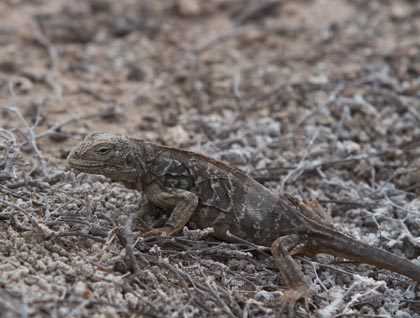Today we visited two small islands in this archipelago, one in the morning known as South Plaza and Santa Fe Island in the afternoon. These two islands are not far from Santa Cruz Island.
These destinations gave our National Geographic Islander guests a better understanding of why reptiles in the Galapagos are more successful than terrestrial mammals. Every species in this archipelago made it to the Galapagos from the closest continental mass, which is South America, and every one of them by chance. Once they arrived in Galapagos they found very unfamiliar conditions that they had to adapt to over time in order to become residents of this oceanic archipelago.
Scientists have been able to understand that these processes of colonization may have taken thousands of year for a single species to be successful. The only ways of colonization are active or passive. Flying, swimming, floating and rafting are just a few means of these two methods of transportation.
Reptiles can endure harsh conditions better than mammals, such as the lack of food and fresh water, harsh sun and many other important factors found on a long journey.
Today we spotted three species of endemic iguanas. Two types were terrestrial iguanas-one of them on South Plaza and the other one on Santa Fe. There is not a great distance between both islands, but each one has its own kind of land iguana. We also saw marine iguanas which have been able to colonize all over the archipelago.
On these two small islands with fascinating cliff formations, we had the opportunity for hiking, swimming and kayaking.
Oceanic islands are a paradise for sea birds and today we observed thousands of them. We viewed blue footed boobies, pelicans, Galapagos shear water, brown noddy terns, storm petrels, tropic birds and soaring frigate birds, too.
We finished our day on a beautiful beach with endemic Galapagos sea lions and a gorgeous sunset.







